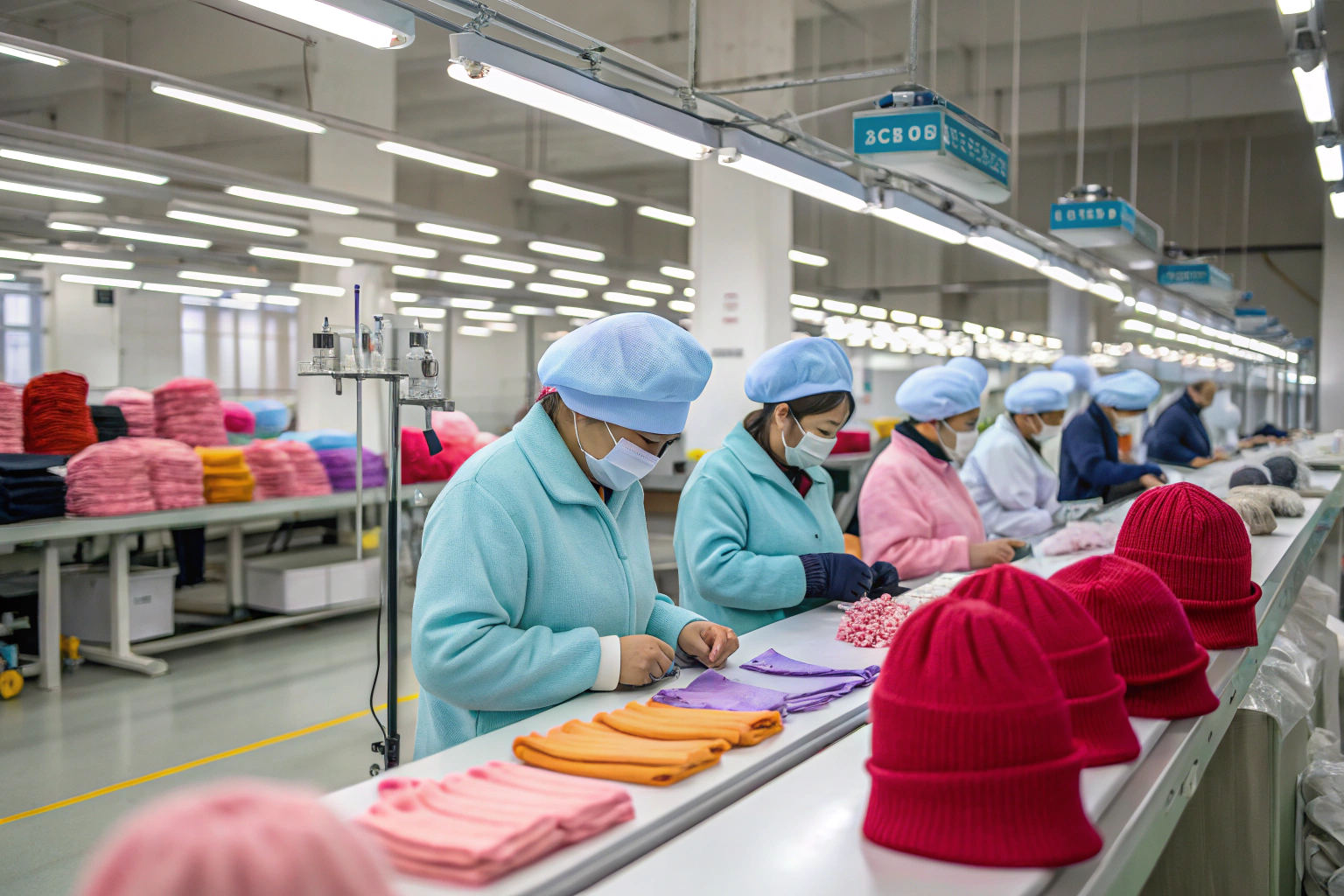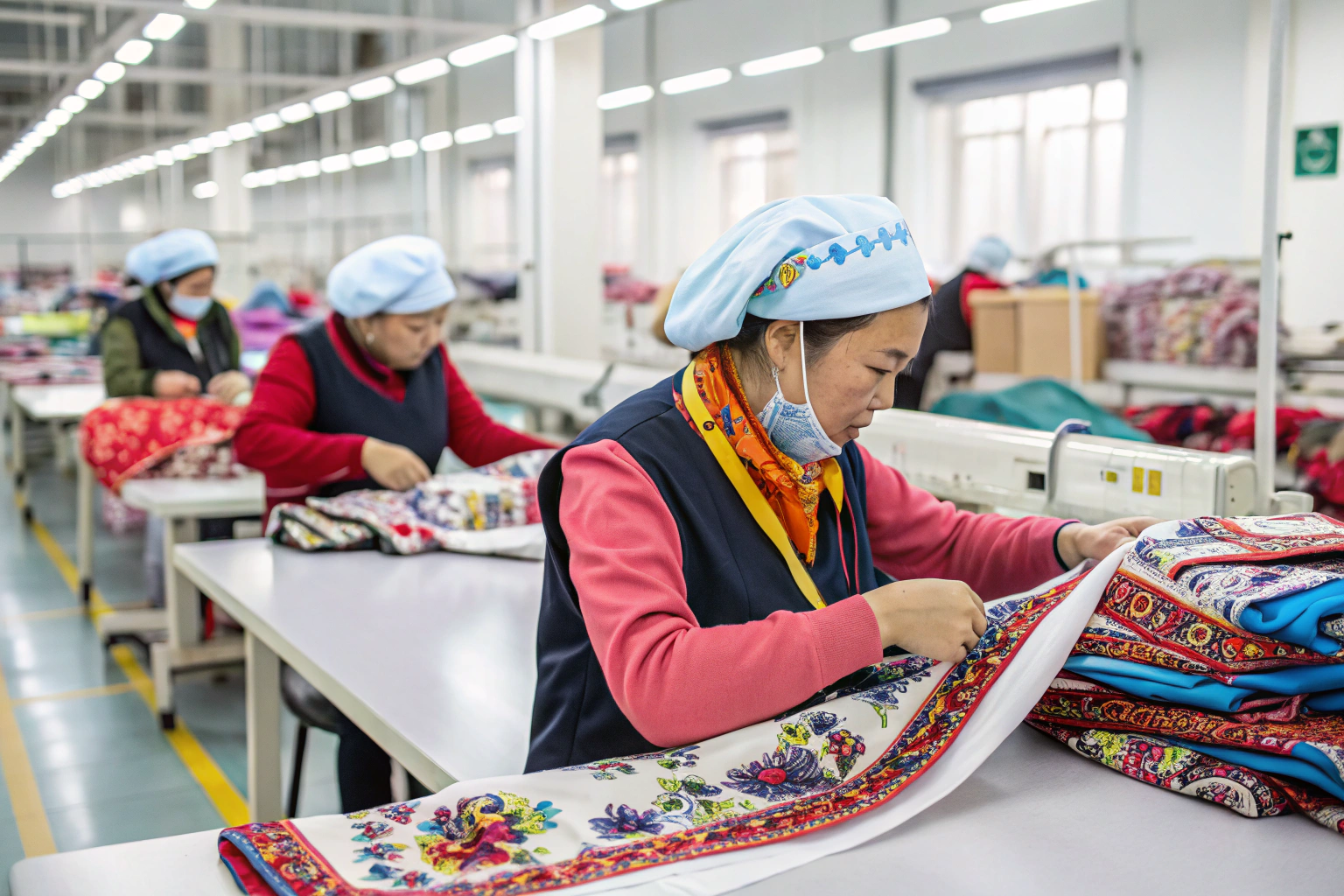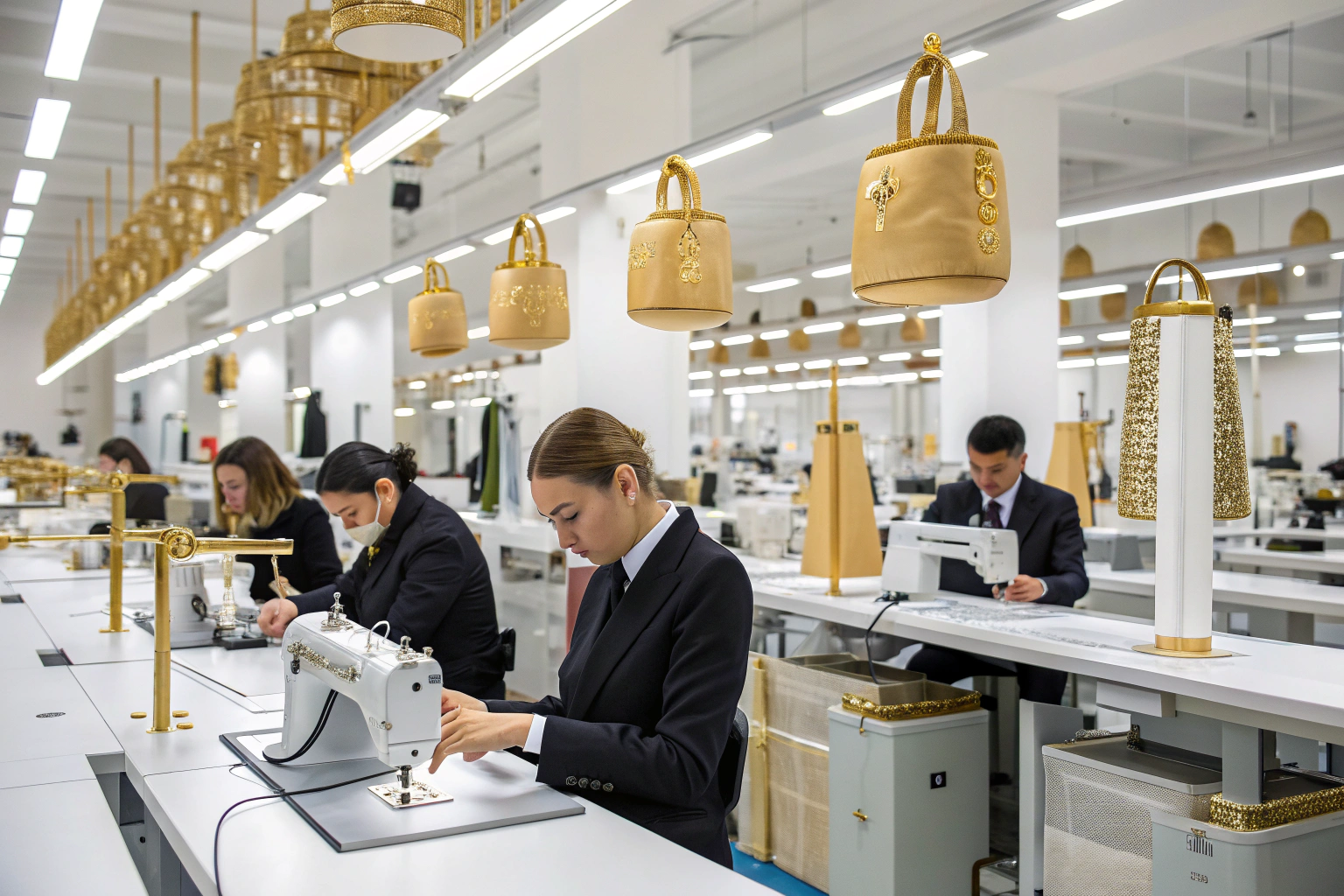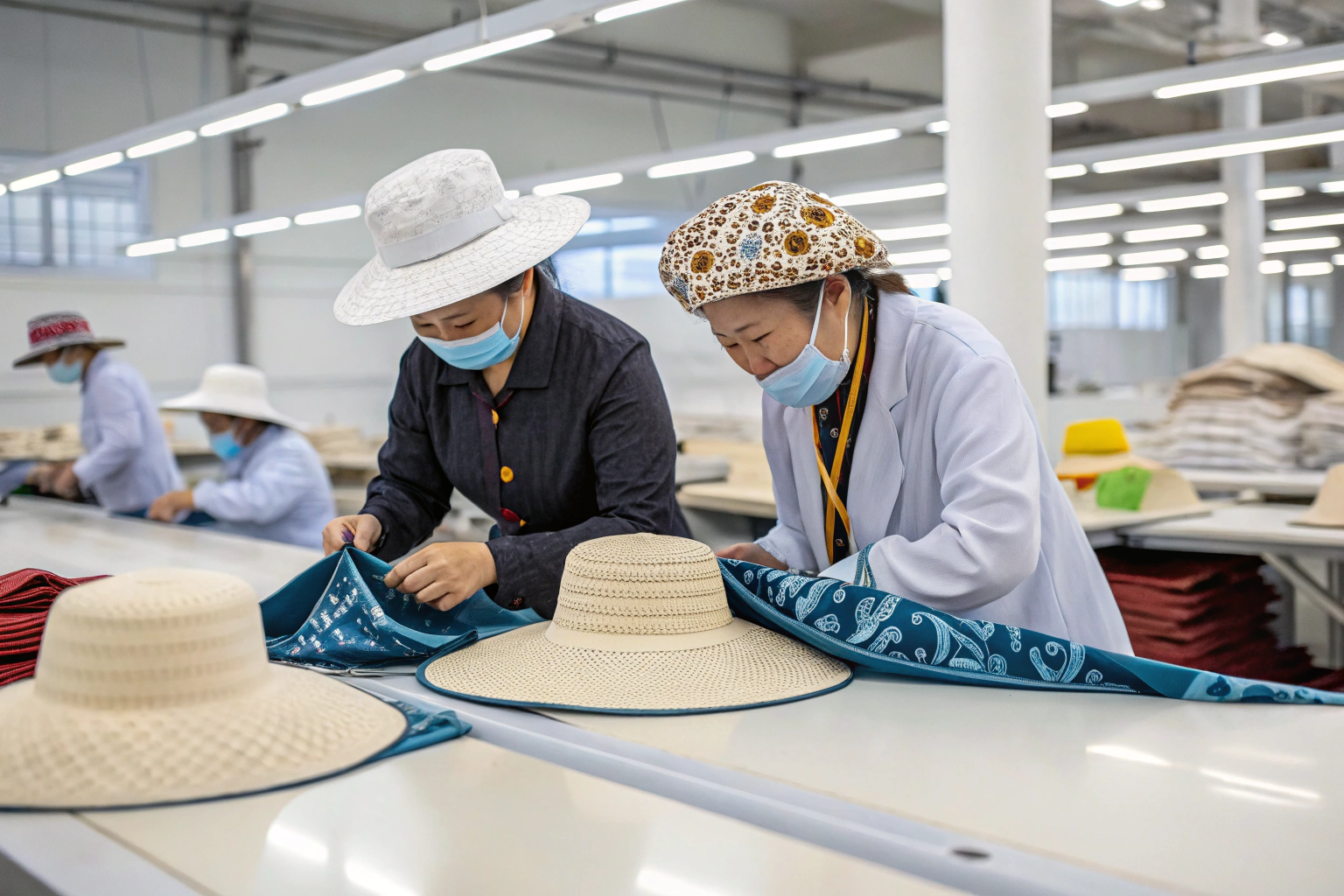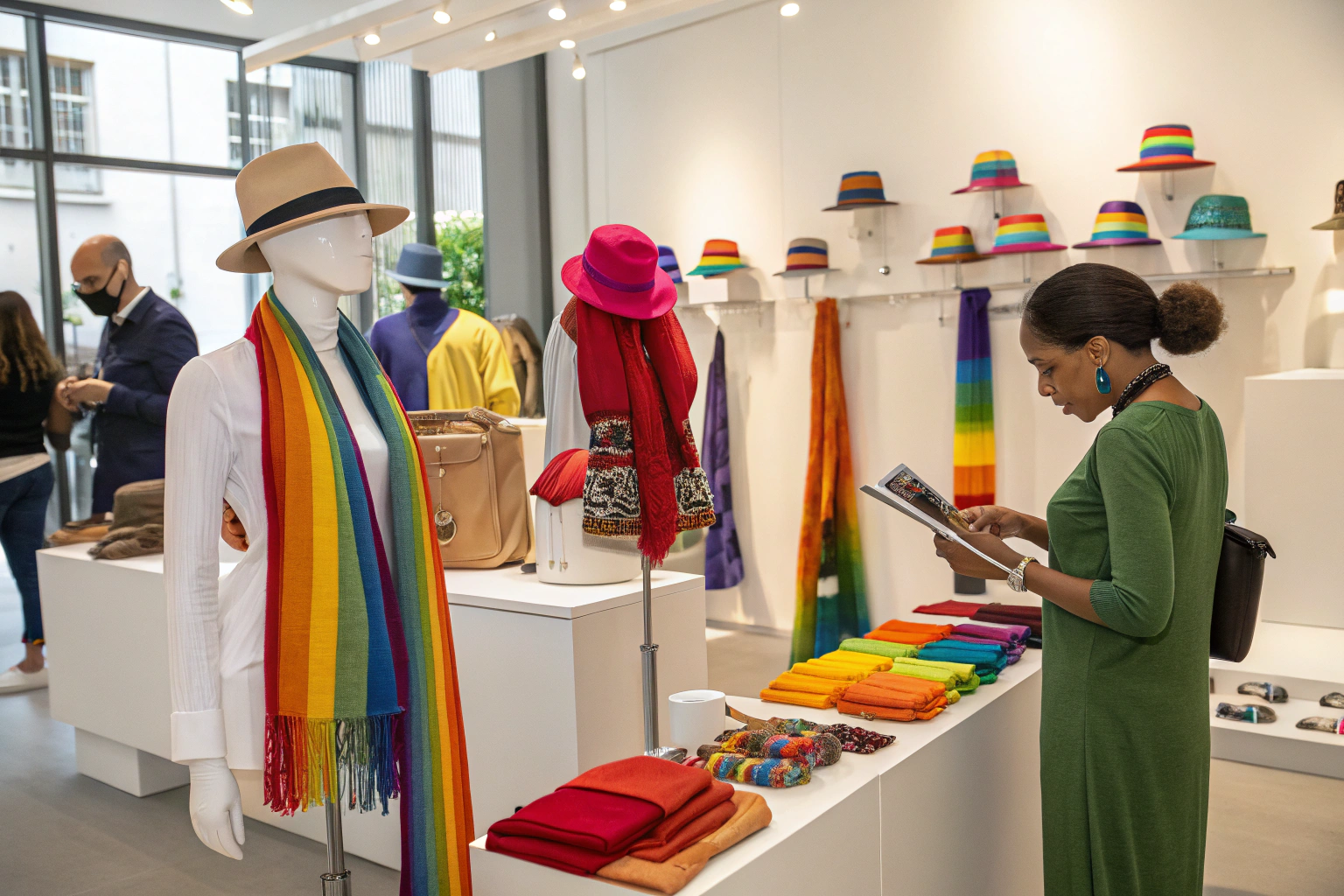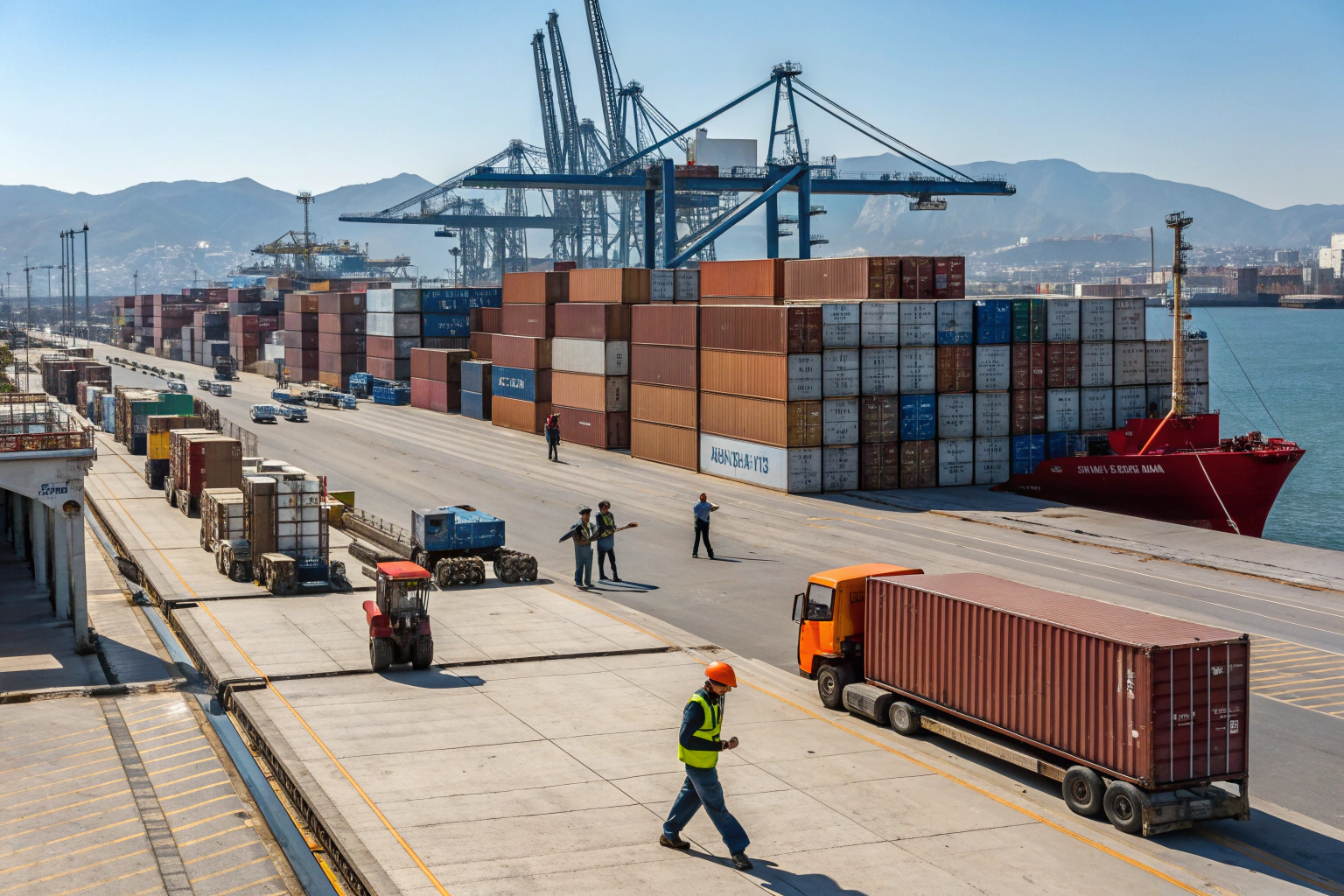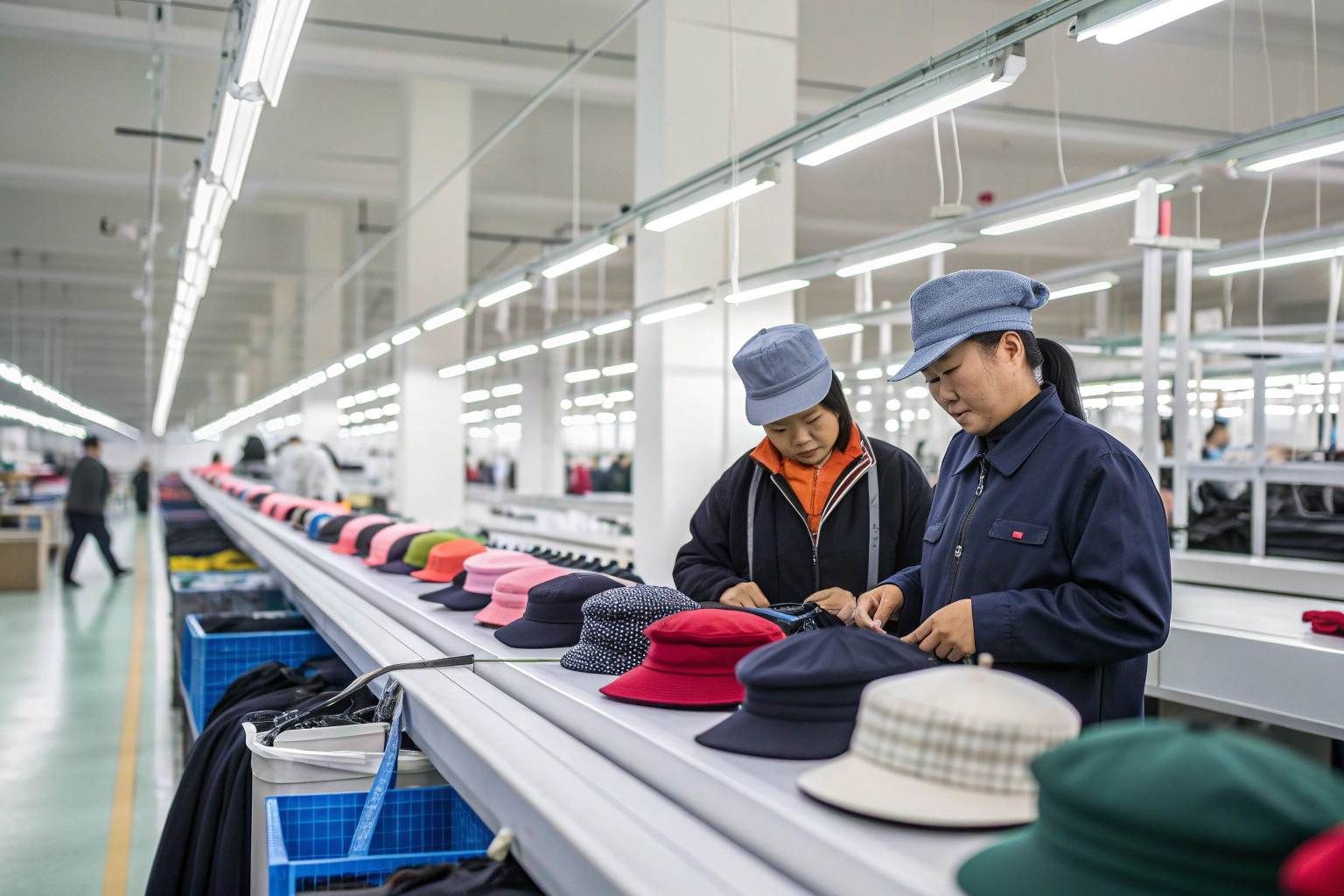Global logistics has powered the fashion accessory trade for decades—but at a major environmental cost. Today, brands and buyers can no longer afford to ignore their carbon footprint.
Green logistics for fashion accessory imports includes low-emission transport options, eco-friendly packaging, optimized freight consolidation, and supplier transparency throughout the supply chain.
At AceAccessory, we’ve been helping clients integrate sustainable logistics strategies into their sourcing operations from China. In this article, I’ll walk you through the tools, technologies, and real-world tactics that are making accessory imports cleaner, greener, and smarter.
What are the green technologies in fashion industry?
Many people think of fashion as glamorous—but behind the scenes, its logistics chain can be dirty, inefficient, and carbon-heavy.
Green technologies in the fashion industry include biodegradable packaging, low-emission transport methods, supply chain digitalization, renewable energy in factories, and blockchain traceability.
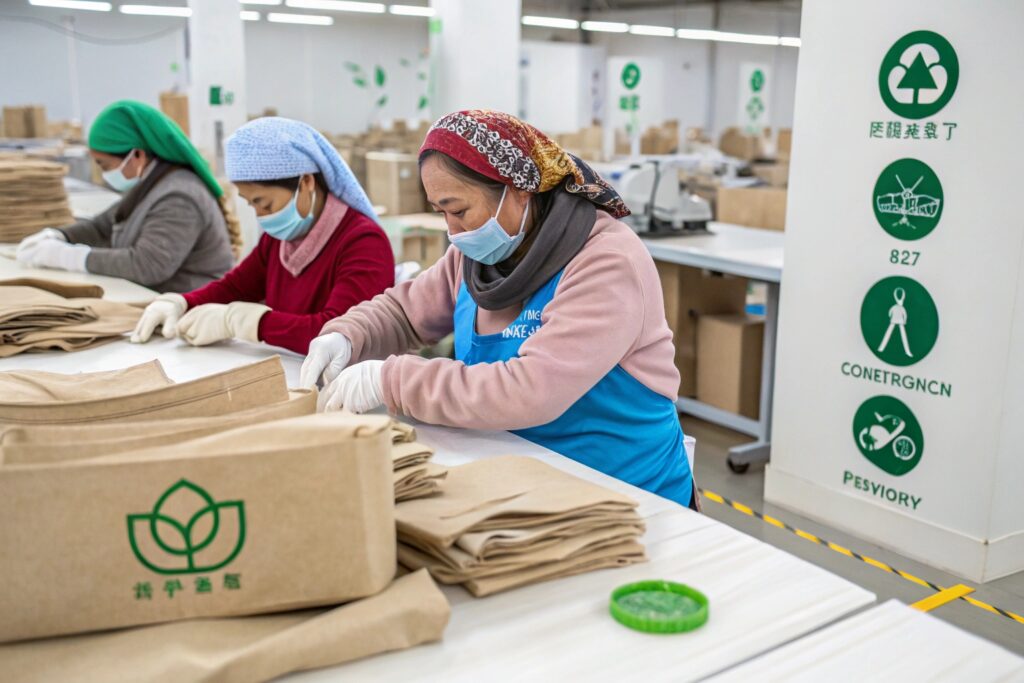
Which sustainable technologies are we using in accessory production and delivery?
At AceAccessory, we support our clients’ sustainability goals from raw material to final delivery. Here’s how:
1. Eco-Friendly Packaging Materials
We use recycled kraft paper, corn-starch-based polybags, and soy-based inks. These reduce landfill waste and are compliant with EU and North American eco-regulations.
- For scarves and gloves: biodegradable sleeve bags
- For belts: folded kraft boxes with zero-plastic seals
- For gift sets: reusable cotton pouches
2. Green Shipping Modes
We offer rail or sea freight by default for large orders. Our partners prioritize clean fuel routes, and we avoid excessive air freight unless absolutely necessary.
| Shipping Mode | Emissions Level | Preferred Use |
|---|---|---|
| Sea freight | Low | Bulk accessory orders |
| Rail freight | Moderate | EU-bound mid-volume orders |
| Air freight | High | Emergency or lightweight items |
3. Digital Freight Planning
We use software to:
- Combine SKUs for better space utilization
- Reduce half-empty shipments
- Plan efficient port-to-door routes
This saves not only carbon but also cost.
4. Solar-Powered Factory Equipment
In our Zhejiang factory, 40% of production lines now operate using solar-powered cutting and stitching machines—particularly in our soft accessories line (shawls, scarves, gloves).
5. Blockchain for Transparency
For some European clients, we link accessory SKUs to blockchain platforms showing origin, factory data, and transit stages. It’s a game-changer for B2B transparency.
What is the green logistics approach?
Fast fashion’s race for speed has created environmental damage—but green logistics is helping slow things down responsibly.
The green logistics approach emphasizes reducing carbon emissions, optimizing transport efficiency, and minimizing environmental harm throughout the supply chain.
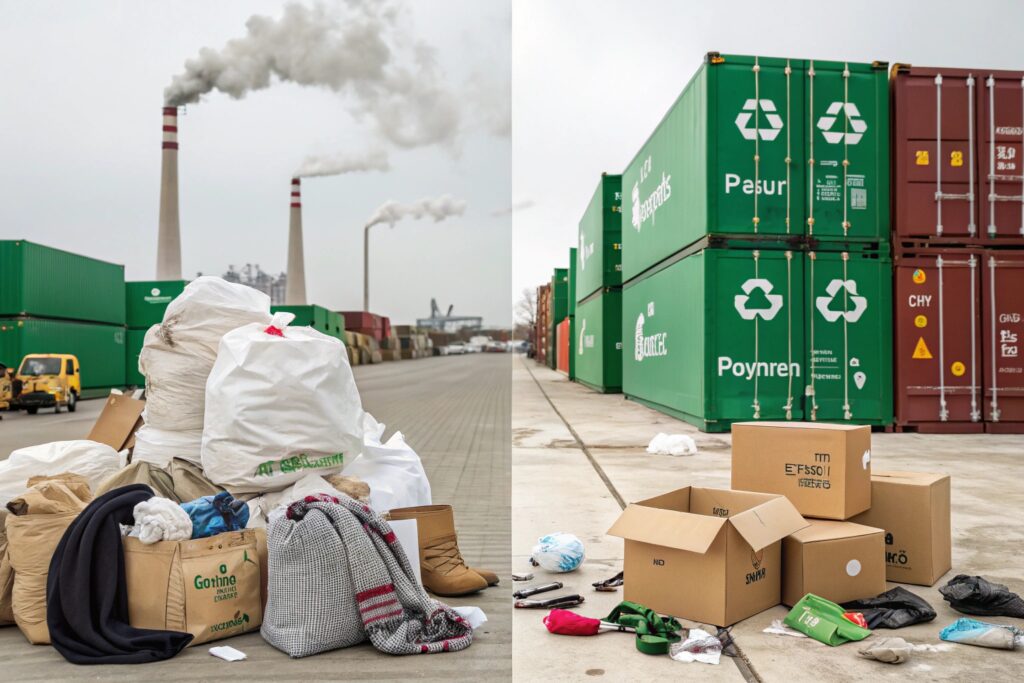
How we implement green logistics for accessory importers
We see green logistics as more than a buzzword—it’s a mindset across sourcing, packaging, shipping, and delivery. Here’s how we support clients adopting it:
A. Consolidated Shipments
We help clients avoid fragmented deliveries. By grouping orders (even across different accessory types), we reduce freight trips.
B. Returnable Packaging
For regular B2B buyers, we use reusable plastic bins or heavy-duty cloth sacks that can be shipped back for repacking.
C. Eco-Certified Carriers
We partner with freight forwarders who:
- Track emissions
- Offset CO₂ via verified carbon credits
- Offer biofuel-powered container services
D. Efficient Route Planning
We recommend port cities with lower customs congestion (e.g., Ningbo over Shanghai) and optimize inland trucking by combining multiple buyers’ deliveries.
E. Digital Docs
Our entire export process—from invoices to COs—is digital. This reduces paper use and speeds up customs clearance.
| Green Logistics Practice | Description | Outcome |
|---|---|---|
| Shipment Consolidation | Combine SKUs and orders in one freight move | Fewer emissions, better unit costs |
| Eco Carrier Selection | Choose forwarders using cleaner energy | Reduced environmental impact |
| Route Optimization | Avoid port delays and long inland hauls | Lower fuel usage |
| Reusable Packaging | Return-friendly bins or fabric pouches | Less waste generation |
One of our U.K. clients slashed their packaging waste by 60% just by switching to our reusable belt packing program. It also saved them money on cartons.
What are the 4 A's of sustainable logistics?
Buzzwords aside, sustainable logistics works best when it follows clear principles. That’s where the “4 A’s” come in.
The 4 A’s of sustainable logistics are Awareness, Avoidance, Anticipation, and Action—used as a framework to assess and improve environmental impact in logistics chains.
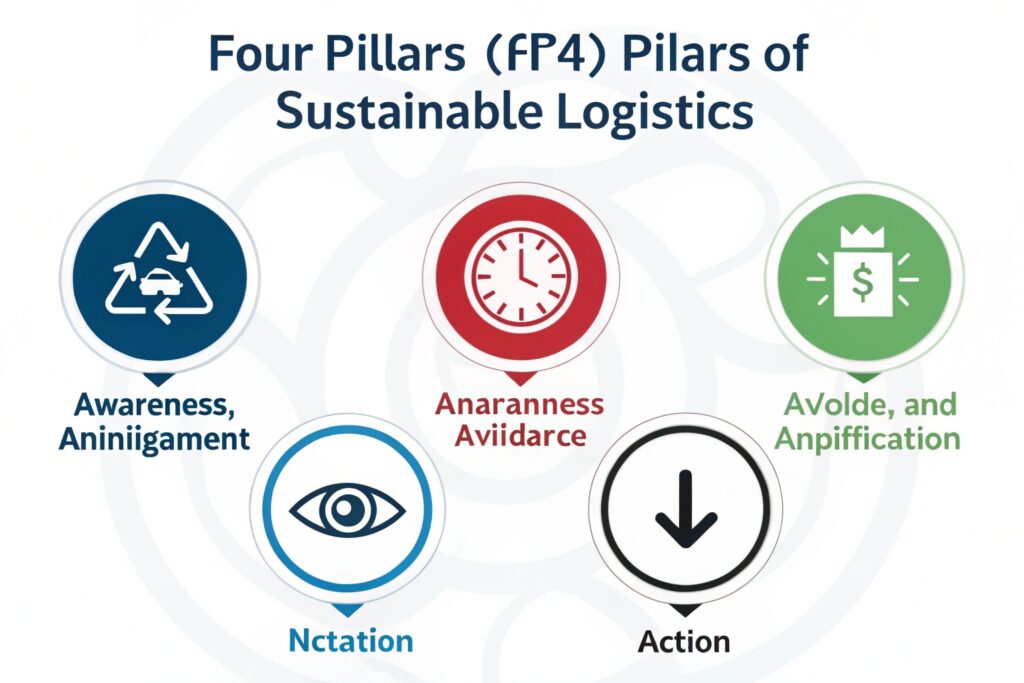
How we apply the 4 A’s in our accessory export operations
Here’s how each “A” helps make our logistics greener:
1. Awareness
We educate clients about the environmental impact of each logistics decision—air vs. sea, single-use vs. recyclable packaging, etc.
- Example: Sending CO₂ reports per shipment
- Tool: Carbon emission calculators in every shipping quote
2. Avoidance
We avoid unnecessary shipments, excessive packaging, and non-compliant materials.
- Example: No over-labeling, no extra layers of bubble wrap
- Outcome: Lighter, cleaner deliveries
3. Anticipation
We forecast demand and shipping seasons with buyers to avoid last-minute air freight.
- Tool: Our “Green Planning Calendar” that maps low-cost, low-emission slots
- Benefit: Predictable, less rushed logistics
4. Action
We implement concrete steps—solar in factories, supplier training, carrier audits, and digital documentation.
| A-Element | Description | How AceAccessory Responds |
|---|---|---|
| Awareness | Know your impact | Shipment carbon reports |
| Avoidance | Cut waste and excess | Minimalist packaging |
| Anticipation | Forecast better choices | Green freight calendar |
| Action | Execute changes on ground | Solar machines, recycled boxes, QR docs |
By following these principles, we’ve helped many brands align their imports with their sustainability goals—and win over eco-conscious buyers.
Which of these is an example of green logistics?
From packaging to ports, there are plenty of ways to “go green.” But not all efforts are created equal.
Examples of green logistics include using recycled packaging, switching to sea freight, adopting solar-powered machinery, consolidating shipments, and partnering with CO₂-offsetting freight providers.
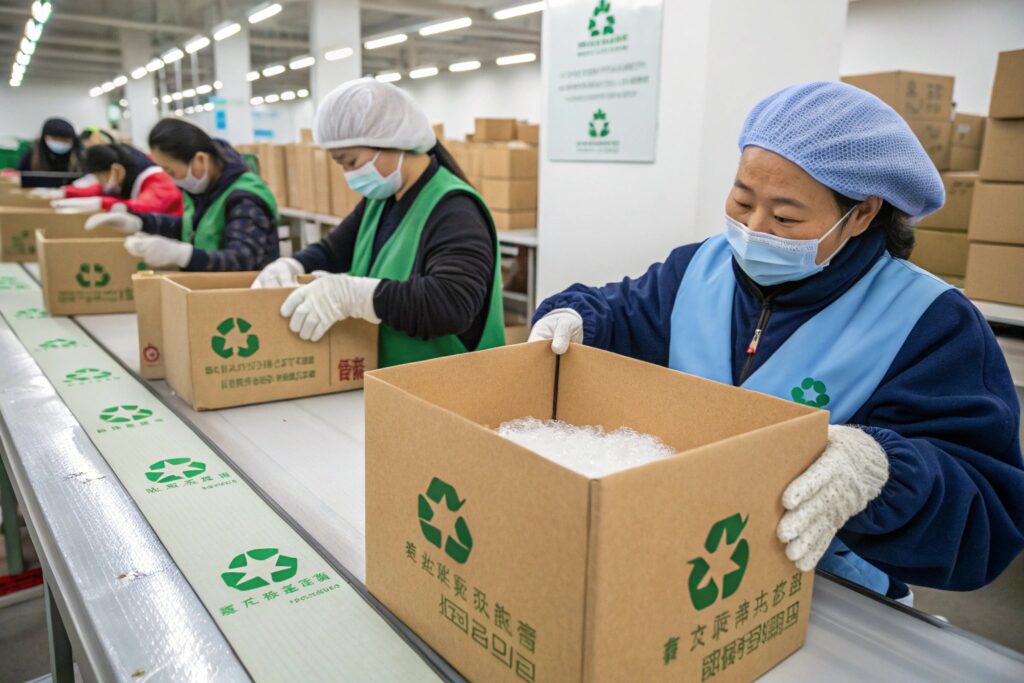
Real-world examples of how we use green logistics for accessory orders
Let me share a few use cases from recent client orders:
Case 1: Winter Hat Shipment to Germany
- Mode: Rail freight (Yiwu to Hamburg)
- Volume: 3 CBM
- Optimization: Shipment consolidated with two other buyers
- Impact: Saved 175 kg of CO₂ compared to air freight
Case 2: Fashion Belt Bulk to Canada
- Packaging: Kraft box, corn-starch bags, QR-code instructions
- Carrier: Certified CO₂-offset shipping partner
- Outcome: Eligible for eco-retail certification
Case 3: Glove Exports to Sweden
- Factory powered by 45% solar energy
- Included blockchain-linked traceability per item
- Client used our data for sustainability reporting
| Practice | Example Accessory | Green Benefit |
|---|---|---|
| Biodegradable packaging | Scarves, gloves, headbands | Less landfill waste |
| Solar-powered machinery | Cotton hats, fabric belts | Reduced factory carbon emissions |
| Shipment bundling | Belts + clips + bags combo | Lower fuel use per unit |
| Digital documentation | CO, invoice, packing list | Paperless export chain |
We now include a “Green Logistics” checkbox on our order forms—clients love this because it gives them control without extra work.
Conclusion
Sustainable logistics isn’t just about saving the planet—it’s about smarter importing. At AceAccessory, we provide green solutions at every step, from packaging and shipping to documentation and factory power use.


